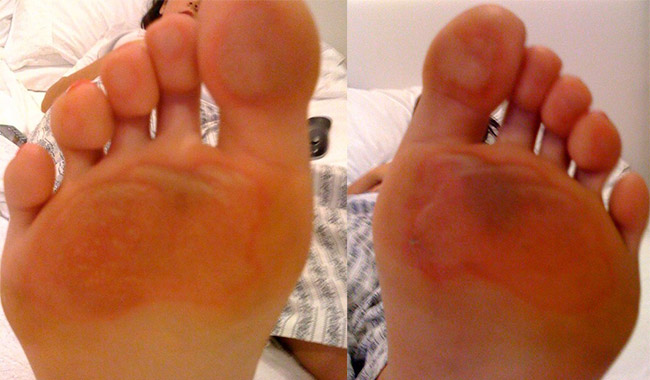The South Florida sun can be so hot! While fun in the sun is wonderful, that bright, hot sun can be very dangerous. Sunburns typically occur from direct sunlight contacting the skin. In Florida, it’s not only direct sunlight on the skin that’s a concern: the heat absorbed by black asphalt is enough to be a very real risk to naked skin.

In the photo above, the asphalt pavement had been exposed to direct sunlight long enough to turn the ground into a frying pan. The patient in the photo above stepped onto that asphalt without shoes or flip-flops. The ground was so hot that the patient burned the bottom of her feet!
Skin Burns: Pain and Mobility Limitations
Skin burns on the bottom of the feet cause pain and significant restrictions in standing or walking activities. Often that pain and those limitations will last for longer than an entire month. Grade 3 burns – in which blistering occurs – are a risk for infection also, given that the role of the skin is to protect the underlying soft tissues from infection. Once there’s a cut or a blister in the skin on the bottom of the feet, the risk of infection is increased significantly. Especially if the pavement is dark and during the late afternoon (after the asphalt has been exposed to direct sunlight for so many hours), the temperatures can be so extreme that burning occurs within a second or two of stepping onto such hot pavement.
Taking Precautions Against the Sun
With the summer months only a few weeks away, and with schools across South Florida closing for the academic year, Dr. Carreira reminds people to remember to take a few simple precautions to avoid getting burned by the sun.
- Protect yourself from direct sunlight: Wear sunscreen, long sleeves (even very lightweight material can block the sun’s harmful UVF rays) and suitable sun blocking covers.
- Don’t forget about your feet: Good, cushioned shoes are helpful in protecting your feet, including from the sun.



